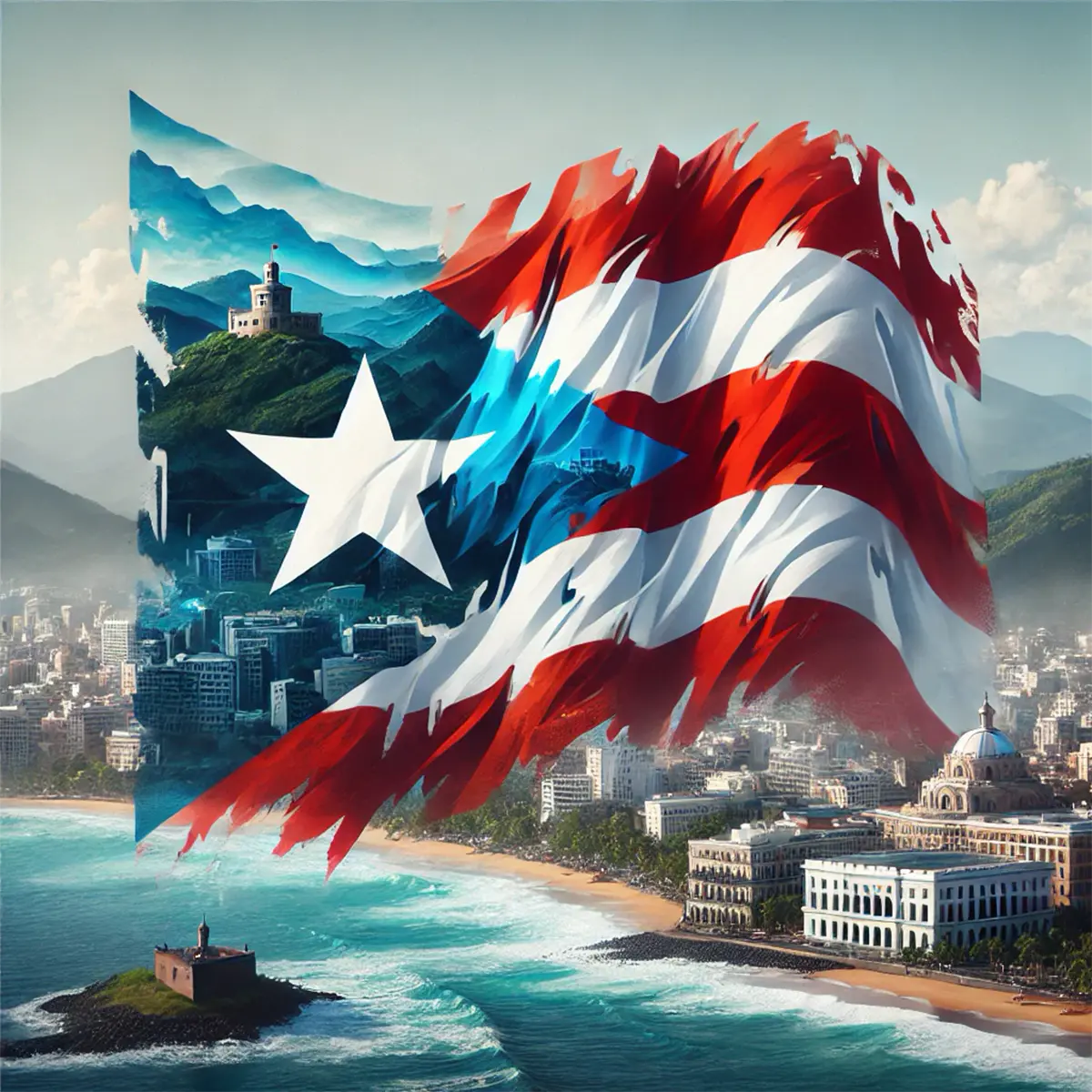On November 19, 1493, Christopher Columbus discovered the island and proclaimed it part of the Spanish Empire. During the Spanish rule, the official symbol on the island was the Spanish flag, which consisted of red and yellow colors and the coat of arms in the center. It was a symbol of imperial power aimed at strengthening Catholicism, the Spanish language and culture on the island.
Spanish rule influenced the development of Puerto Rico, including its economy, social structure, and culture. Despite this, discontent and a desire for autonomy grew among the population. Under the influence of revolutionary movements in Latin America and the Caribbean, Puerto Ricans began to form their national identity, which would later be reflected in their own flag.

In 1868, an uprising known as the Grito de Lares took place, which was the first significant step in the struggle for independence from Spanish rule. The rebels, inspired by independence movements in other parts of Latin America, created their own flag of resistance. The flag of Grito de Lares consisted of a white cross that divided the flag into four parts: two blue squares at the top and two red squares at the bottom. In the upper left blue square was a white five-pointed star. This flag became a symbol of the revolution, the thirst for freedom and independence of Puerto Ricans. Although the uprising was quickly suppressed by the Spanish authorities, the Grito de Lares flag left a deep mark on the national consciousness and continued to inspire subsequent generations of fighters for Puerto Rican autonomy and sovereignty. However, the Spanish flag remained the official flag until 1898.
In 1898, the short-lived Spanish-American War broke out, which had a significant impact on world politics and the colonial possessions of both countries. The war began due to rising tensions over the war for Cuba's independence from Spain, as well as the incident with the USS Maine, which exploded in Havana Harbor. Although the exact cause of the explosion was not established and Spain's involvement was not proven, this disaster became the catalyst for the United States to declare war on Spain under the slogan “Remember the Maine, to hell with Spain!”.
The war lasted only a few months and ended in a convincing victory for the United States. The main battles took place in Cuba, Puerto Rico, the Philippines, and Guam. After the defeat, Spain was forced to sign the Treaty of Paris in 1898, according to which it gave up its colonial possessions in the Caribbean and the Pacific. As a result of this treaty, the United States gained control over Cuba, Puerto Rico, Guam, and the Philippines. The war was a turning point for both countries: Spain lost the remnants of its former empire, and the United States took a step towards becoming a world power with colonial possessions.

At that time, the US flag had not yet acquired its final modern look with 50 stars, which appeared on the flag only in 1960, so the flag of Puerto Rico changed several times from 1898 to 1959:
- The first American flag - 45 stars (1898 - 1908);
- 46 stars (1908 - 1912);
- 48 stars (1912 - 1959).
On July 24, 1952, an important event for Puerto Rico took place - the adoption of a new Constitution, which granted the island the status of a “freely associated state” within the United States of America. This status, known as “Estado Libre Asociado” (ELA), provided Puerto Rico with a measure of autonomy, allowing it to have its own government, legislation, and constitution, although the island remained under U.S. sovereignty. The adoption of this Constitution contributed to the recognition of the Puerto Rican flag as the official state symbol. The event of 1952 marked the beginning of a new era for Puerto Rico - autonomy with economic and military ties to the United States, and Puerto Rican citizens were granted American citizenship with the right to social and economic benefits.

However, this flag was not created in 1952, but only officially recognized. Puerto Rico's own flag was designed in 1895 by revolutionaries and nationalists who advocated the island's independence from Spain. Among them were such prominent figures as Francisco Matos Pascal, Mariano Bravo and other members of the Puerto Rican national movement. The design of the flag was carefully thought out: the red and white stripes symbolized the blood shed in the struggle and the peace sought by Puerto Ricans. The blue triangle on the left side of the flag represented the ocean and sky surrounding the island, and the white star in the center of the triangle symbolized the independence and unity of Puerto Rico. In August 1995, the government issued a decree on the use of the flag, which defined the colors to be used, but again did not clearly define the shades. Therefore, the dark blue color was changed to blue. At the moment, this is the final version of the flag that is still in use today. In 2022, there was an unsuccessful attempt to approve the current royal blue as the official flag color.





